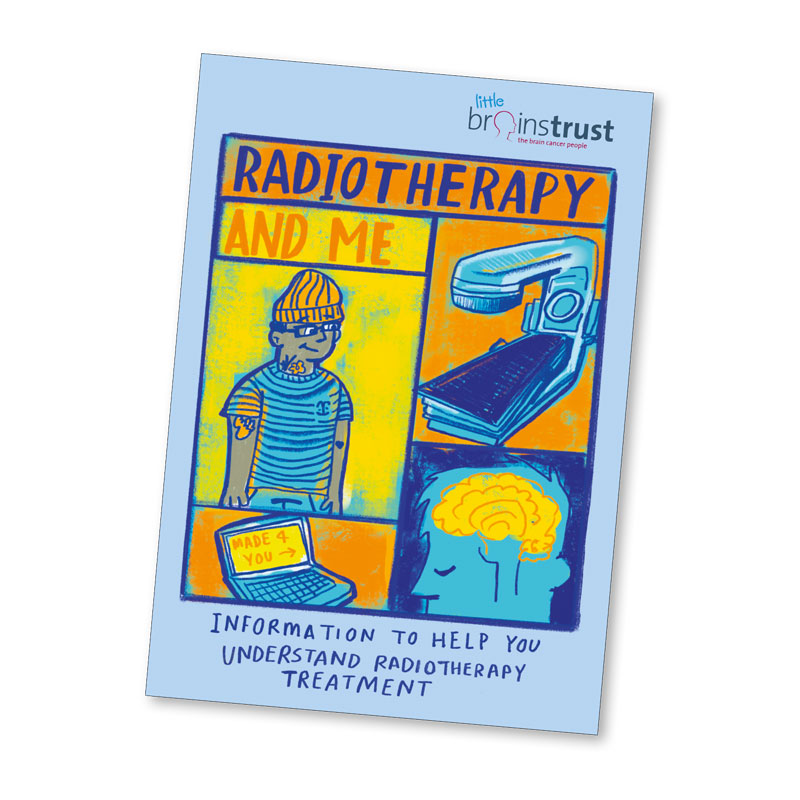Understanding radiotherapy
Our “Radiotherapy and me” guide is designed to help you and young people understand the treatment
 What is radiotherapy?
What is radiotherapy?
Radiotherapy uses high-energy X-ray beams to destroy cancer cells in brain tumours. These X-rays come in many forms: photons, gamma rays or protons. Radiotherapy usually follows surgery. Radiation kills brain tumour cells that may remain in the area following surgery. Sometimes people who are unable to have surgery have radiotherapy instead. It may also be given in combination with chemotherapy. Radiotherapy is most commonly delivered through a machine called a linear accelerator (linac).
Does my child need radiotherapy?
Children may be given radiotherapy if their tumour is inoperable, or it may be given after surgery to eliminate any remaining cells. Even if the tumour has been removed, radiotherapy may be recommended to keep unseen cells from growing. The aim is to destroy any remaining cells and reduce the chance of recurrence.
If your child is under three years old, other treatment options, like surgery and chemotherapy, may be considered over radiotherapy. This is due to the long-term impact of radiation on the brain. Your child’s doctor will discuss each option with you and determine what treatment pathway would be the most effective for your child. If you have questions, talk with your doctors. Trust them and be guided by them.
How does radiotherapy work?
Radiotherapy treatments take advantage of the fact that healthy tissue repairs damage in about eight hours, so low to moderate doses of radiation can be delivered daily. Diseased tissue cannot repair itself like this, so eventually the tumour cells die, as they cannot reproduce effectively. The tumour then gets smaller. Treatment results, which are visible on follow-up scans, include shrinkage of the tumour or no further tumour growth. Cell destruction is a lengthy process. It can often take up to six months before the effect of treatment can be determined by doctors. This is why follow-up scans are done a couple of months after treatment has finished.
To find out more about radiotherapy read our “Radiotherapy and Me”. This guide covers:
- How Is a Brain Tumour Treated?
- Questions You Might Want to Ask
- What Is Radiotherapy?
- Do I Need Radiotherapy?
- How Does Radiotherapy Work?
- The Radiotherapy Process
- Side Effects of Fractionated Radiotherapy
- Radiotherapy for Brain and Spinal Tumours
- Other Types of Radiotherapy
- Glossary of terminology you may hear





